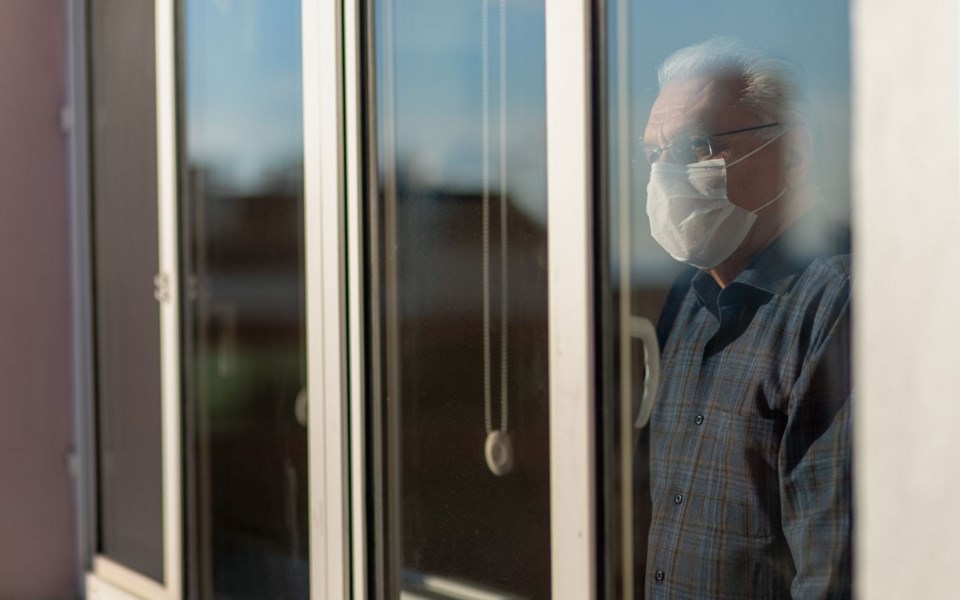Canada is learning a lesson in humanity that we have not experienced for a generation.
As a nation, we are mourning the loss of hundreds of elders to COVID-19 and being faced with hard truths about how we have neglected this segment of our community.
It is impossible not to become emotional as we read about our seniors dying of COVID-19 without family around them; it is impossible not to become angry as we read about how some seniors are spending their last years without the support they need.
"We haven't placed a high priority on providing care in nursing homes. I think that basically we'd rather not think about them," Pat Armstrong, one of Canada's foremost thinkers on long-term care and a distinguished research professor in sociology at York University, told CBC's The Sunday Edition on April 26.
This weekend we learned, for example, that 1,000 of the 1,340 people who have died of COVID-19 in Quebec were seniors in care. Just take a minute to think about that.
Here in B.C., we saw COVID-19 ravage the Lynn Valley Care Centre, where the virus first turned up in early March—the province's first death from coronavirus was a senior from this care home.
As of April 28, of B.C.'s 105 COVID-19 deaths, at least 64 were seniors in care.
It was quickly realized by our health authorities that one reason these facilities were at risk was due to the work patterns of the employees who had to work at more than one centre to earn a full-time wage. As they moved from centre to centre, they spread the virus.
(In response to this realization, B.C.'s Provincial Health Officer Dr. Bonnie Henry ordered in early April that staff could no longer work at multiple facilities. While this solved one problem, it created another, with staffing shortages across the province in seniors' care homes.)
Added to this is the fact that some centres house multiple seniors in one room and bathrooms can be shared as well. There are also communal dining rooms.
According to a 2018 report from the Canada Health Coalition, just under half of all long-term care facilities in the country are private, for-profit entities.
And according to Armstrong: "We know from the research that for-profits tend to have lower staffing levels. They tend to have more transfers to hospitals. They tend to have more bed ulcers."
This week, the Canadian Centre for Policy Alternatives (CCPA) called for a reset on B.C.'s senior care system.
"This crisis has exposed the long-term impacts of policies aimed at cutting costs and expanding the role of for-profit companies in B.C.'s seniors care sector, which has led to contracting out, precarious working conditions and low pay, understaffing and reduced access to publicly funded care," said Simon Fraser University professor Kendra Strauss in the CCPA release.
The CCPA called the prior situation the result of the erosion of wages and working conditions dating back two decades.
Most support for our seniors in long-term facilities come from "care aids." They are supposed to be paid at least $23.48 an hour, but according to A Billion Reasons to Care—a report by the BC Seniors Advocate—some were being paid less than $17 an hour.
That same report found that for-profit homes failed to deliver 207,000 funded direct-care hours, generated 12 times the amount of profit compared to the not-for-profit sector—$34.4 million versus $2.8 million—and generated $1.4 billion in revenue, of which $1.3 billion came from public funding, with $37 million in profits.
The changes that are happening now must be carried into the future. Canada cannot go back to what is clearly a flawed way of looking after our elders.
As Armstrong so eloquently put it: "We should be thinking, 'what kind of a place would I like to be able to go into? What kind of care do I want there? What do I think they should look like?'
"As they said in a German home [we researched], we want to put life into years—rather than years into life."
EDITOR'S NOTE: Last weekend, the Pique team gathered via Zoom for the annual B.C. & Yukon Community Newsmedia Awards and we were thrilled to be selected as the No. 1 Community Newspaper in B.C. in our category. We also took two Gold awards for: Multimedia Feature Story Award (Training Day by Braden Dupuis, Keili Bartlett, Brandon Barrett and Megan Lalonde), and an Ad Design Award for Karl Partington for his No Limits Heli ad. We were awarded five Silver writing awards, as well as a Silver in ad design, along with Bronze awards for writing and ad design as well. Your community paper is an outstanding example of journalism and design and we are grateful for this recognition as well as the incredible support of our community. We would not be the paper we are without your support.




